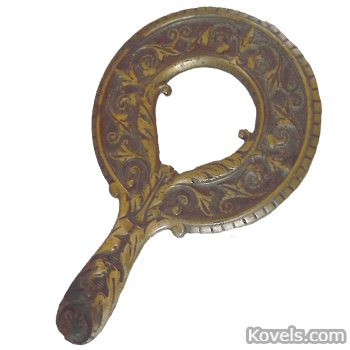Q: We came across this brass item while cleaning out my grandmother’s spare room. We found out it’s a brass trivet, No. 23, made by Archibald Kenrick & Sons. The design registration mark indicates it was made in 1884. It’s 9 3/4 inches long and 6 inches wide and is very heavy. What is it worth? Should my mother shine it up or leave it as is? There is a wing nut on the back.
A: Cast iron or brass trivets were used in the 1800s and early 1900s when cooking was done in a fireplace or on a wood stove. The wing nut on your trivet indicates it probably had a longer piece that clamped onto the fireplace fender. Archibald Kenrick established an iron foundry in West Bromwich, England, in 1791. At first, buckles and livery fittings were made. Cast iron cookware was made beginning in 1805. The company became Archibald Kenrick & Sons in 1827 when Archibold Kenrick, Jr., joined the business. After the foundry closed in 1965, the company made die cast products. It is still in business making castors and hardware. The registry mark, Rd 15021, was used in 1884, but the trivet could have been made any time after that. Trivets were very popular with collectors about 25 years ago, but there is less interest now and prices are lower. It would sell for about $20 to $40. If you prefer shiny brass, clean it. Some collectors like trivets dark, some shiny. It won’t change the price.




Although I have no interest in collecting trivets, my many decades of dealing in collectibles would suggest that NOT CLEANING is most always the preferable choice if you’re contemplating eventual resale.
If your eventual prospect wants it “Bright & Shiny” they still have that option. However, if your prospect prefers the character of “Original Condition,” you’ve lost a chance of sale.